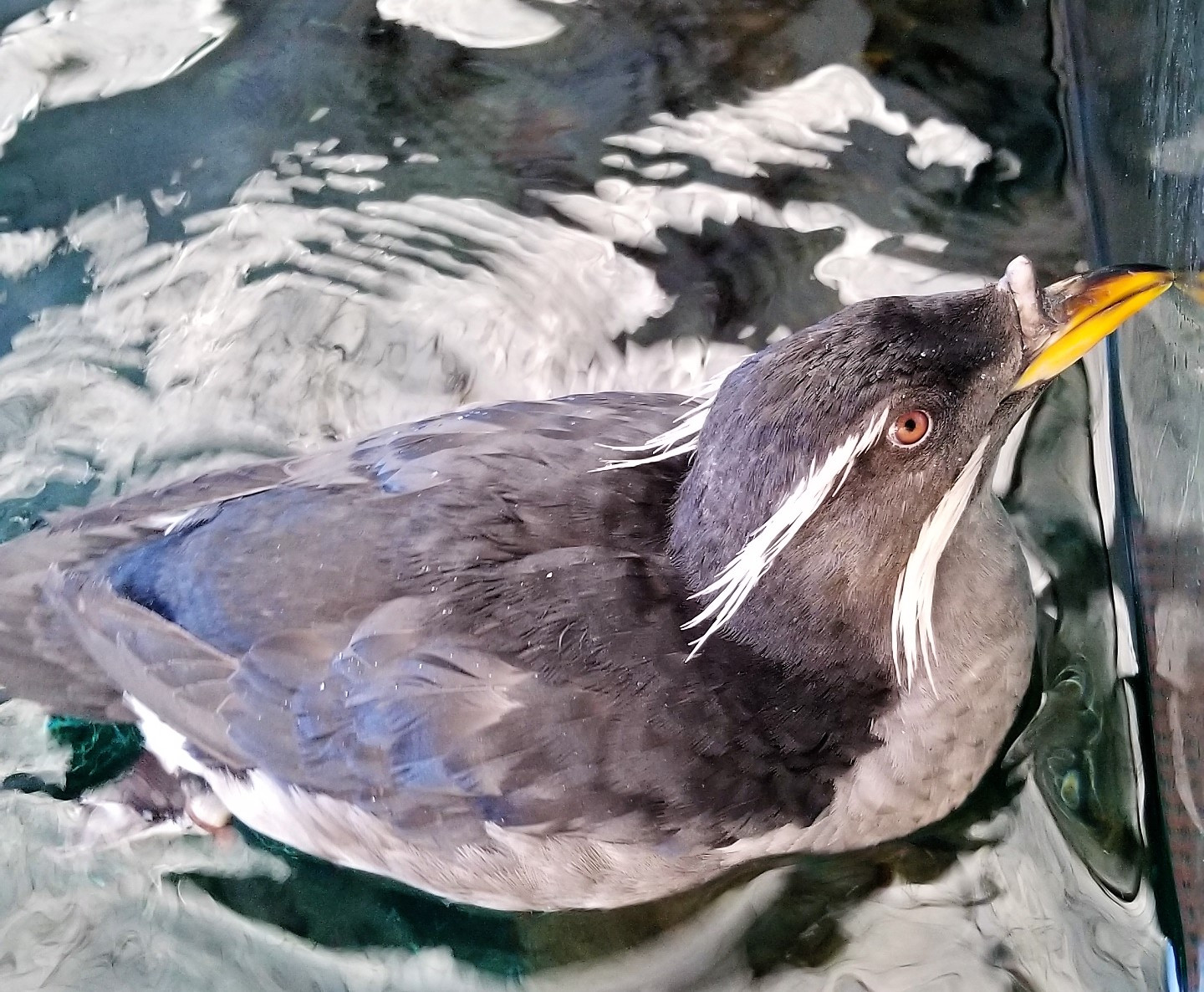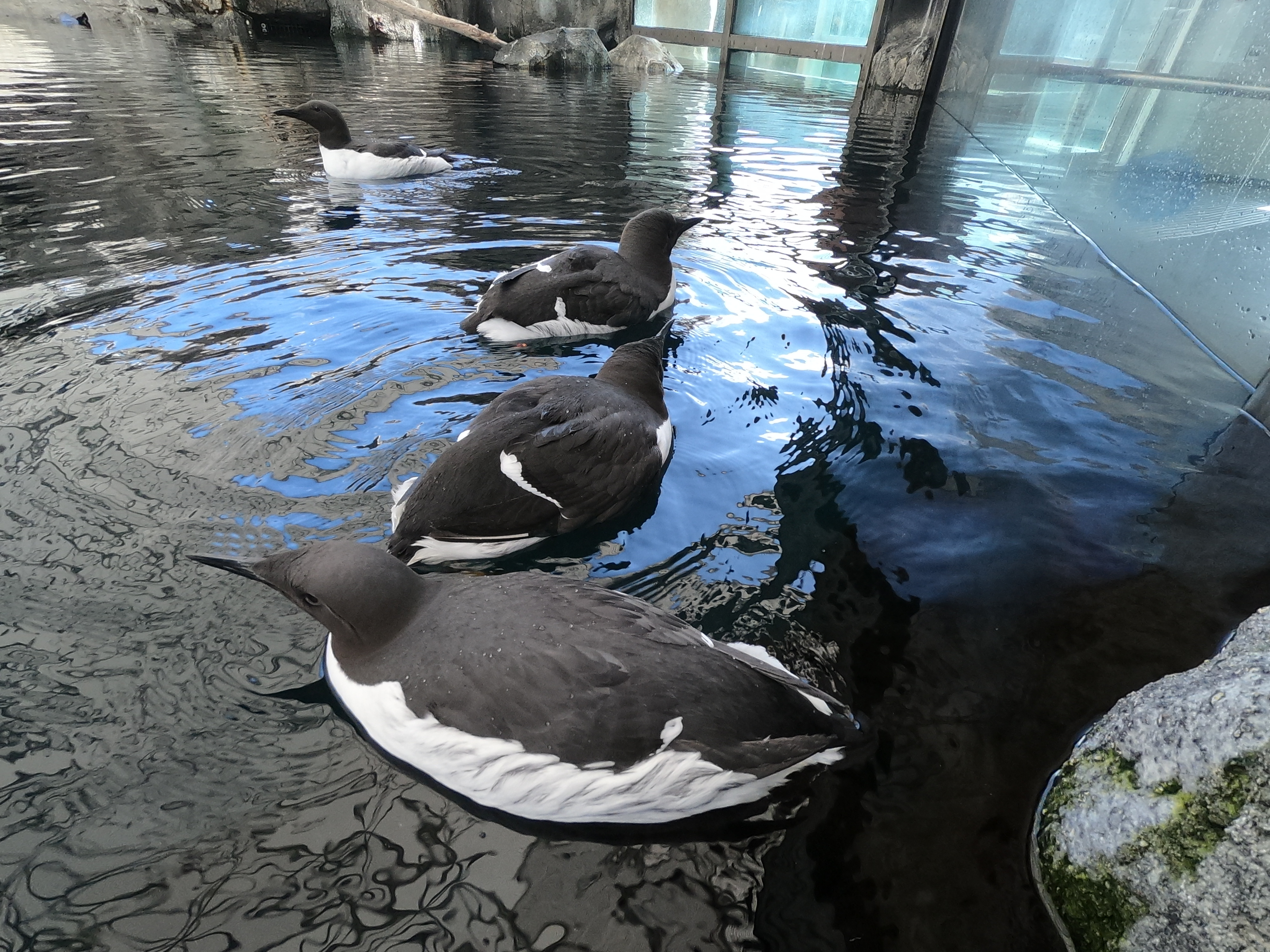Penguins, with their tuxedoed appearance and waddling gait, are iconic birds of the polar regions. Known for their incredible swimming and diving abilities, a common question often arises: can penguins fly? While seemingly simple, this question delves into the fascinating world of avian adaptation, exploring the evolutionary trade-offs between flight and aquatic prowess. While penguins are indeed flightless birds, the story of their wings and their close relatives, the alcids, reveals a much richer and more complex picture of seabird evolution.
 A rhinoceros auklet in the water
A rhinoceros auklet in the water
The Penguin Paradox: Flightless Swimmers
Penguins are masters of the marine environment, perfectly adapted for life in the water. Their bodies are streamlined, their bones are denser than those of flying birds to reduce buoyancy, and their wings have evolved into powerful flippers. These flippers propel them through the water with remarkable speed and agility, allowing them to hunt fish, krill, and squid in the depths of the ocean. Some species, like Emperor penguins, can dive to incredible depths exceeding 500 meters in search of food.
This exceptional swimming ability, however, comes at a cost: the loss of flight. The very adaptations that make penguins such efficient swimmers render them unable to take to the skies. Their wings, optimized for underwater propulsion, are too small and stiff to generate lift in the air. Their heavy bodies, while advantageous for diving, are also a hindrance to flight. In essence, penguins represent an evolutionary path where swimming efficiency has been prioritized over aerial locomotion.
Alcids: Masters of Air and Sea
In contrast to penguins, there exists another group of seabirds known as alcids, which present a different evolutionary strategy. Alcids, including puffins, murres, guillemots, and auklets, share a similar ecological niche with penguins, relying on the ocean for food and spending a significant portion of their lives at sea. Like penguins, they are adept divers, using their wings to propel themselves underwater in pursuit of fish. However, unlike penguins, alcids have retained their ability to fly.
 Common murres are one of the five species of alcids at the Alaska SeaLife Center
Common murres are one of the five species of alcids at the Alaska SeaLife Center
Alcids are not just capable of flight; they are strong, if somewhat ungainly, fliers. Common murres, for example, can reach speeds of up to 50 miles per hour in the air. Furthermore, alcids are also impressive divers. Thick-billed murres hold the record for diving depth among alcids, reaching depths of over 200 meters. Intriguingly, when considering diving depth relative to body mass, alcids are considered the most efficient divers on Earth, surpassing even penguins in their ability to transport their weight to significant depths and remain submerged for extended periods.
The Secret to Alcids’ Dual Prowess: Wing Mechanics
The question then arises: how do alcids manage to be both proficient swimmers and capable fliers, while penguins have sacrificed flight for swimming? Research into the biomechanics of alcid locomotion provides some fascinating insights. High-speed video analysis of alcids swimming underwater reveals that they employ a wing stroke remarkably similar to that of penguins. Both groups of birds generate thrust on both the upstroke and downstroke of their wing movements, a departure from the typical flight pattern of most birds, which primarily generate propulsive force on the downstroke.
 Alcids swimming through the waters chasing after fish
Alcids swimming through the waters chasing after fish
This bi-directional force production in the water is highly efficient for swimming. By generating thrust throughout the entire wingbeat cycle, alcids minimize energy expenditure required to maintain speed, similar to how cruise control in a car improves fuel efficiency by maintaining a consistent speed and reducing unnecessary accelerations and decelerations. This efficient underwater propulsion allows alcids to be successful aquatic predators.
Re-evaluating Penguin Flightlessness: What Alcids Teach Us
The fact that alcids can achieve both flight and exceptional swimming challenges the long-held assumption that penguins lost their ability to fly as a necessary trade-off for becoming proficient swimmers. The traditional view suggests that the wing morphology required for efficient underwater swimming is incompatible with flight, leading to the evolutionary divergence where penguins specialized in swimming and sacrificed flight.
However, alcids demonstrate that this is not necessarily the case. Their ability to excel in both aerial and aquatic environments suggests that the evolutionary constraints on combining flight and swimming may not be as rigid as previously thought. Current research is exploring whether alcids, in developing penguin-like swimming adaptations, have had to compromise on certain aspects of flight efficiency compared to other flying birds. Wind tunnel experiments using alcid wings are underway to compare their aerodynamic performance to that of other bird species, aiming to quantify any potential trade-offs in flight capability.
 A wind-tunnel experiment to measure the lift from different types of bird wings
A wind-tunnel experiment to measure the lift from different types of bird wings
Ultimately, studying alcids provides a valuable perspective for re-evaluating the evolutionary journey of penguins and their flightlessness. It encourages us to question long-held assumptions about the natural world and to recognize the diverse and often surprising solutions that evolution can generate. By continuing to investigate these fascinating seabirds, we can gain a deeper understanding of the interplay between adaptation, constraint, and the remarkable capacity of life to thrive in diverse environments.
